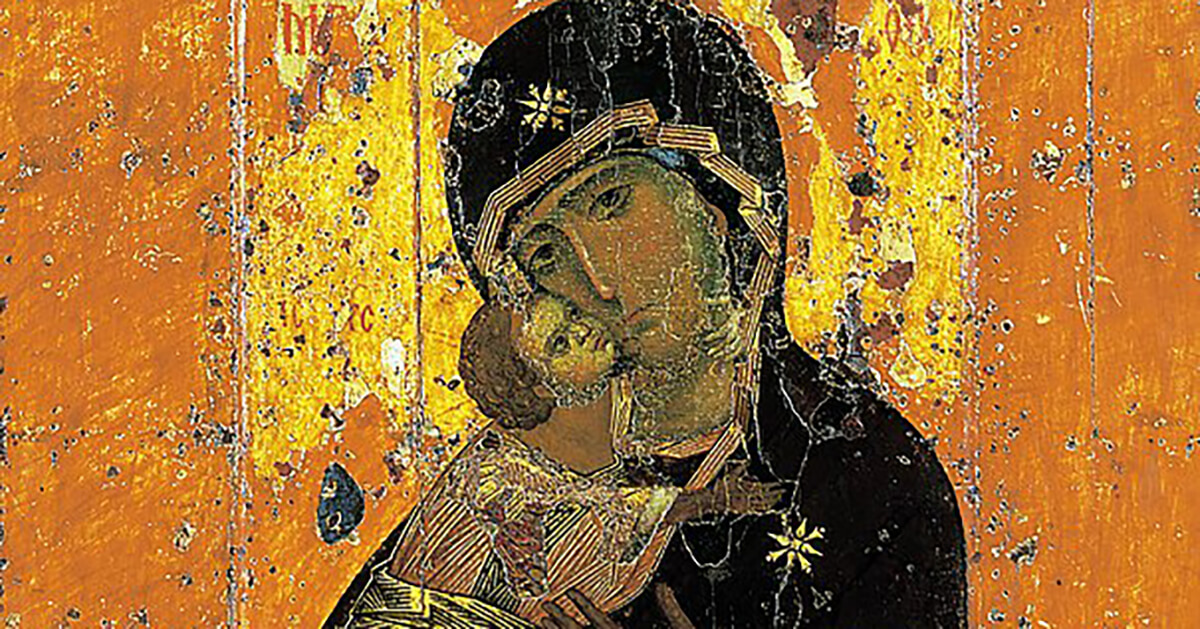Russia’s rich cultural heritage has produced a wealth of artistic masterpieces that span centuries, reflecting the country’s tumultuous history, diverse traditions, and boundless creativity. From the opulent splendor of the imperial courts to the revolutionary fervor of the avant-garde movement, Russian art has captivated audiences around the world with its beauty, depth, and innovation. In this article, we embark on a journey through Russia’s history to explore some of its most important pieces of art.
1. The Icon of Our Lady of Vladimir:
Dating back to the 12th century, the Icon of Our Lady of Vladimir is one of the most revered religious icons in Russia. Believed to have miraculous powers, this Byzantine icon depicts the Virgin Mary and the Christ Child with a tender intimacy that has inspired devotion for centuries. Housed in the Tretyakov Gallery in Moscow, it serves as a symbol of Russia’s deep spiritual heritage and enduring faith.
2. The Trinity by Andrei Rublev:
Created in the 15th century by the legendary icon painter Andrei Rublev, The Trinity is a masterpiece of Russian religious art. Depicting the Holy Trinity seated at a table, the painting exudes a sense of tranquility and harmony that transcends time and space. Considered a pinnacle of medieval Russian art, The Trinity is revered for its sublime beauty and profound spiritual symbolism.
3. The Bronze Horseman by Étienne Maurice Falconet:
Commissioned by Catherine the Great in the 18th century, The Bronze Horseman is a monumental equestrian statue of Peter the Great, the visionary ruler who transformed Russia into a modern European power. Standing on the banks of the Neva River in St. Petersburg, the statue symbolizes Peter’s indomitable spirit and unwavering determination to build a new Russia.
4. The Ninth Wave by Ivan Aivazovsky:
Ivan Aivazovsky, the prolific 19th-century painter, captured the majesty and power of the sea like no other artist. The Ninth Wave, his most famous work, depicts a shipwrecked crew battling the tumultuous waves of the Black Sea. With its dramatic lighting and evocative composition, The Ninth Wave epitomizes the Romantic fascination with nature’s sublime beauty and awe-inspiring force.
5. The Last Day of Pompeii by Karl Bryullov:
Karl Bryullov’s monumental canvas, The Last Day of Pompeii, is a tour de force of historical painting. Depicting the cataclysmic eruption of Mount Vesuvius in ancient Pompeii, the painting pulsates with drama, emotion, and meticulous attention to detail. Bryullov’s mastery of light and shadow imbues the scene with a sense of impending doom, capturing the tragic fate of a civilization doomed by nature’s wrath.
6. The Rooks Have Come Back by Alexei Savrasov:
In the mid-19th century, the Russian landscape emerged as a favored subject among artists seeking to capture the beauty and soul of the Russian countryside. Alexei Savrasov’s The Rooks Have Come Back is a quintessential example of this genre, depicting a tranquil landscape bathed in the soft light of dawn. With its poetic evocation of the changing seasons and the eternal cycle of nature, the painting embodies the Russian artistic tradition of lyrical landscape painting.
7. Black Square by Kazimir Malevich:
In 1915, Kazimir Malevich unveiled Black Square, a radical departure from traditional representational art that heralded the birth of the avant-garde movement known as Suprematism. Simple yet revolutionary, Black Square consists of a black square painted on a white canvas, challenging viewers to confront the essence of art itself. As a manifesto of artistic freedom and innovation, Black Square remains one of the most iconic and controversial works in Russian art history.
8. The Morning of Our Fatherland by Viktor Vasnetsov:
Viktor Vasnetsov’s epic canvas, The Morning of Our Fatherland, celebrates the spirit of Russian nationalism and patriotism. Depicting the mythical heroes of Russian folklore rallying to defend their homeland, the painting embodies the ethos of Slavic unity and resilience in the face of adversity. With its stirring imagery and mythic symbolism, The Morning of Our Fatherland continues to inspire pride and admiration among Russians to this day.
From religious icons and historical epics to avant-garde experiments and lyrical landscapes, Russia’s artistic legacy is as diverse and multifaceted as the country itself. Through these masterpieces, we glimpse the soul of a nation—a nation shaped by its history, culture, and collective imagination. As we celebrate Russia’s contributions to the world of art, let us marvel at the beauty, complexity, and enduring power of its most iconic creations.


